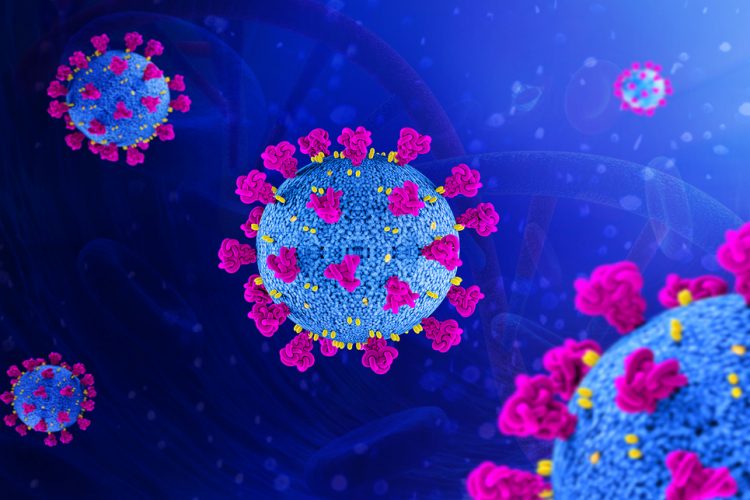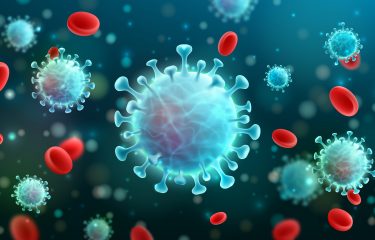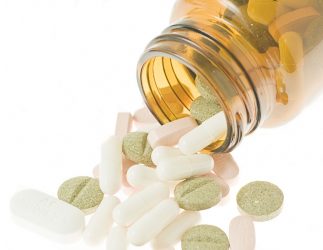COVID-19: the big repurpose and even bigger pharmaceutical partnership
Posted: 14 May 2020 | Heidi West (Vohra Wound Physicians) | No comments yet
Heidi West discusses how academia, government and the pharmaceutical industry can work together to potentially repurpose drugs for the treatment of COVID-19.


The COVID-19 global pandemic1 has big pharma scrambling in an attempt to repurpose existing medications for the treatment of SARS-CoV-2, the virus causing respiratory infection. Here, we explore some of the recent research and collaboration efforts in this arena.
Eli Lilly studying rheumatoid arthritis drug baricitinib (olumiant)
One of the leading drug manufacturers in the US, Eli Lilly, is doing just that – despite opposition from some medical professionals. The candidate, a rheumatoid arthritis medication, has a warning that patients with existing infections should not take the drug because it can exacerbate infection. One thing known for sure about the novel coronavirus: it causes serious respiratory infection.
On 10 April 2020, Eli Lilly2 agreed with the US National Institute of Allergy and Infectious Disease, an arm of the National Institutes of Health (NIH) as part of NIAID’s Adaptive COVID-19 Treatment Trial, to study the efficacy and the safety of baricitinib.3 Hospitalised COVID-19 patients will began receiving the medication last month in the US with a plan for expansion to hospitals in Europe and Asia in the next few weeks.
Baricitinib is approved in over 65 countries to treat adults with moderate to severe rheumatoid arthritis. Although the label contains a warning with regards to risk for the development of serious infection, this is the reason the drug is being tested. The inflammatory cascade that is present in COVID-19 may be counteracted by the effect of the candidate on the immune system of the patient. This is a hypothesis that warrants study in patients who have the novel coronavirus.
Phase II monoclonal antibody (mAb) study


NIH launches public-private partnership for COVID-19 choices for treatment
On 17 April 2020, the NIH and the Foundation for the NIH announced that a team of leading biopharmaceutical companies will join the Health and Human Services (HHS) Office of the Assistant Secretary for Preparedness and Response, the Centers for Disease Control and Prevention (CDC), the FDA and the European Medicines Agency (EMA) to design and implement an international strategy for a COVID-19 pandemic research response.
The Accelerating COVID-19 Therapeutic Interventions and Vaccines (ACTIV) team will develop a framework for the prioritisation of vaccine and drug candidates, streamline clinical trials, co-ordinate regulatory processes and/or utilise existing assets among all of the partners to respond to the existing and any future pandemics that may arise.
Participating ACTIV organisations5 include:
- Governmental
- NIS
- HHS Office of the Assistant Secretary for Preparedness and Response
- FDA
- CDC
- EMA
- Non-profit
- Foundation for the NIH
- Industry
- AbbVie
- Amgen
- AstraZeneca
- Bristol Myers Squibb
- Evotec
- GlaxoSmithKline
- Johnson & Johnson
- KSQ Therapeutics
- Eli Lilly & Company
- Merck & Co., Inc.
- Novartis
- Pfizer
- Roche
- Sanofi
- Takeda
- Vir Biotechnology
Under the co-ordination of the Foundation for the NIH the partners will:
- Provide infrastructure, expertise and funding
- Focus on the goal of identifying and facilitating the entry of the most promising candidates into clinical trials
- Make prioritised compounds available with associated data to support any research related to the pandemic.
ACTIV as One Force


ACTIV will operate on four focus areas set for fast-track. Each of the focus areas will be led by a working group of senior scientists that represent the government, academia and the pharmaceutical industry.
The four ACTIV focus areas
The first focal point is the standardising and sharing of pre-clinical evaluation through an open forum which allows for comparison and validation. Establishing a process that is centralised to all entities with a repository for the harmonious sharing of methods and model evaluation is a part of reaching this goal; the access to validated animal models must be seamless for all groups to work together. All parties will provide enhanced comparison of approaches that were used in the identification of informative assays. Furthermore, every organisation has agreed to share access to their high-throughput facilities, particularly in biosafety level two laboratories. The goal is to test all compounds that have been in human trials for the identification of the potential for use as treatments in hospitalised COVID-19 patients.


The third focal point relates to networks and maximising the capacity and efficacy of clinical trials by forming the connection between existing networks of trials for building capacity and enhancing capabilities, including the specialisation of various populations in differing stages of diseases. This creates the added benefit of utilising the infrastructure and expertise of a multitude of networks including:
- Adjuvant Discovery and Development
- AIDS Clinical Trials Network
- Clinical and Translational Science Awards Programs
- Clinical Trials in Organ Transplantation
- Co-operative Centers on Human Immunology
- HIV Prevention Trials Network
- HIV Vaccine Trials Network
- Human Immunology Project Consortium
- International Network for Strategic Initiatives for Global HIV Trials
- National Cancer Institute Community Oncology Research Program
- National Cancer Institute’s Clinical Trial Network
- Prevention and Early Treatments of Acute Lung Injury Clinical Trials Network
- Strategies to Innovate EmeRgENcy Care Clinical Trial Network
- T and B Cell Discover Programs and Immune Epitope Database
- Vaccine Treatment and Evaluation Units.
The final focal point of ACTIV is the advancement of vaccination development by the creation of a framework that is built on collaboration for the sharing of insights into natural immunity and vaccine candidate-induced immune response by mapping epitopes, developing assays, establishing a protocol for the sampling and analysis of reagents and the collection of clinical data regarding immunological responses while enabling meta-analysis for correlates of protection.
The power of partnership
With so many major industry, governmental and academic players coming together, the expedition of R&D activities that is obviously required to battle COVID-19 can and will be a reality. The public and private sectors can together develop a strategic roadmap that will combat this pandemic and run risk prevention and pre-emptive management of future threats.
About the author
Heidi West is a medical writer for Vohra Wound Physicians, a national wound care physician group. She writes about healthcare and technology in the medical industry.
References
- COVID-19 Infection Control : Combating Panic with Science | Vohra [Internet]. Vohra. 2020 [cited 13 May 2020]. Available from: https://vohrawoundcare.com/covid-19-infection-control-combating-panic-with-science/
- Lilly Begins Clinical Testing of Therapies for COVID-19 | Eli Lilly and Company [Internet]. Eli Lilly and Company. 2020 [cited 13 May 2020]. Available from: https://investor.lilly.com/news-releases/news-release-details/lilly-begins-clinical-testing-therapies-covid-19
- Rheumatoid Arthritis (RA) Treatment | Olumiant (baricitinib) [Internet]. Olumiant.com. 2020 [cited 13 May 2020]. Available from: https://www.olumiant.com/
- [Internet]. 2020 [cited 13 May 2020]. Available from: https://www.researchgate.net/publication/305668073_Abstract_3259_LY3127804…
- NIH to launch public-private partnership to speed COVID-19 vaccine and treatment options [Internet]. National Institutes of Health (NIH). 2020 [cited 13 May 2020]. Available from: https://www.nih.gov/news-events/news-releases/nih-launch-public-private-partnership-speed-covid-19-vaccine-treatment-options
Related topics
Clinical Development, Clinical Trials, Drug Development, Drug Discovery, Research & Development (R&D), Therapeutics, Viruses
Related organisations
AbbVie, Accelerating COVID-19 Therapeutic Interventions and Vaccines (ACTIV), Adjuvant Discovery and Development, AIDS Clinical Trials Network, Amgen, AstraZeneca, Bristol-Myers Squibb, Clinical and Translational Science Awards Programs, Clinical Trials in Organ Transplantation, Co-operative Centers on Human Immunology, Eli Lilly, Eli Lilly & Company, European Medicines Agency (EMA), Evotec, FDA Centers for Disease Control and Prevention (CDC), GlaxoSmithKline, HIV Prevention Trials Network, HIV Vaccine Trials Network, Human Immunology Project Consortium, International Network for Strategic Initiatives for Global HIV Trials, Johnson & Johnson, KSQ Therapeutics, Merck & Co, National Cancer Institute Community Oncology Research Program, National Cancer Institute’s Clinical Trial Network, Novartis, Pfizer, Prevention and Early Treatments of Acute Lung Injury Clinical Trials Network, Roche, Sanofi, Strategies to Innovate EmeRgENcy Care Clinical Trial Network, T and B Cell Discover Programs and Immune Epitope Database, Takeda, US Health and Human Services (HHS), US National Institute of Allergy and Infectious Diseases (NIAID), US National Institutes of Health (NIH), Vaccine Treatment and Evaluation Units, Vir Biotechnology
Related drugs
Related diseases & conditions
Acute Respiratory Distress Syndrome (ARDS), Coronavirus, Covid-19









